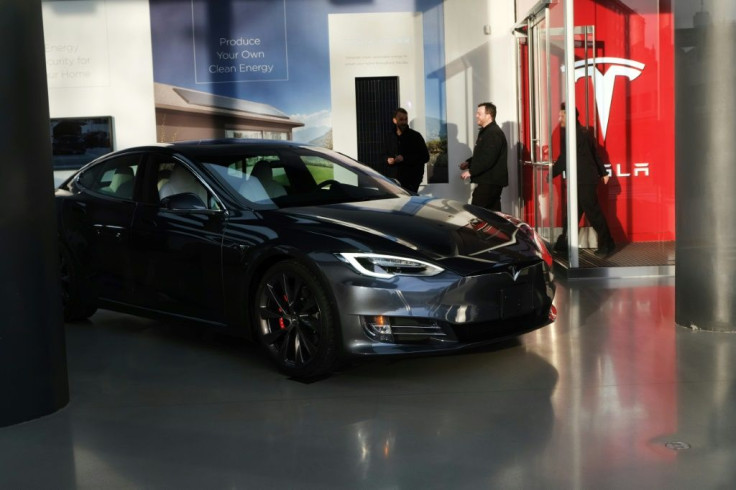Tesla Vehicles Manipulated Into Breaking Speed Limit By Putting Electrical Tape Over Sign

KEY POINTS
- Multiple Tesla vehicles were manipulated into speeding, in a test conducted by cybersecurity firm McAfee
- McAfee has said these incidents do not pose serious risks for drivers
- Tesla's autopilot feature has been suspected of causing multiple deadly crashes, but the electric vehicle giant rejects the idea
Multiple Tesla cars were manipulated into speeding in a test by putting a strip of electrical tape over a speed limit sign, tricking the vehicle’s cruise control system.
Employees at Cybersecurity company McAfee put the tape over the “3” in a 35 mph speed limit sign. During the test, the Tesla vehicle’s cruise control began to accelerate, as the car read the sign as 85 miles per hour.
The test caused both the 2016 Tesla Model X and that year’s Model S to speed up to 50 mph. The vehicles have Mobileye EyeQ3 camera systems which read the speed limit signs and transmit that information to the car’s autonomous driving features, such as Traffic-Aware Cruise Control.
McAfee has been testing vulnerabilities in Tesla vehicles over the past 18 months, and has said the speed limit sign trick does not pose a serious risk to drivers. Tesla has stopped using the Mobileye system in its vehicles while Mobileye’s latest camera system does not show the same vulnerability that was exposed in the test.
Tesla’s self-driving cars have seen tragedy in the past, with the brand’s autopilot feature possibly causing deadly crashes.
In March, a Florida man driving a Tesla Model 3 was killed when the vehicle drove into a truck towing a trailer. Investigators at the National Transportation Safety Board (NTSB) later found in May that the car’s autopilot feature was engaged shortly before the crash.
"Tesla drivers have logged more than 1 billion miles with Autopilot engaged, and our data shows that, when used properly by an attentive driver who is prepared to take control at all times, drivers supported by Autopilot are safer than those operating without assistance," Tesla said in response to the NTSB investigation.
In March 2018, a man in California was killed due to a glitch in Tesla’s autopilot technology.
© Copyright IBTimes 2025. All rights reserved.




















